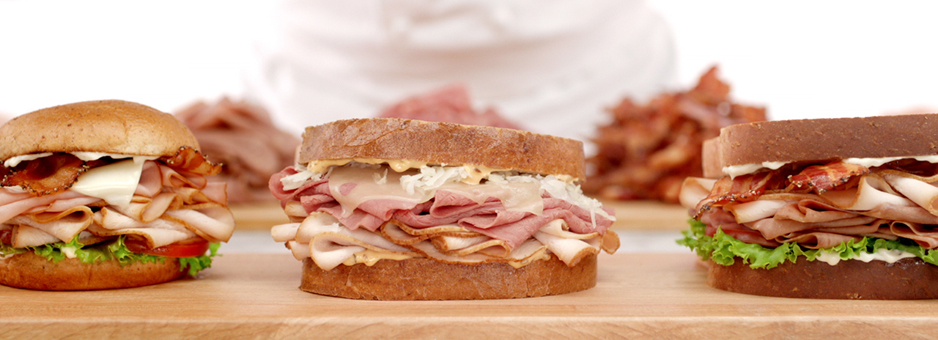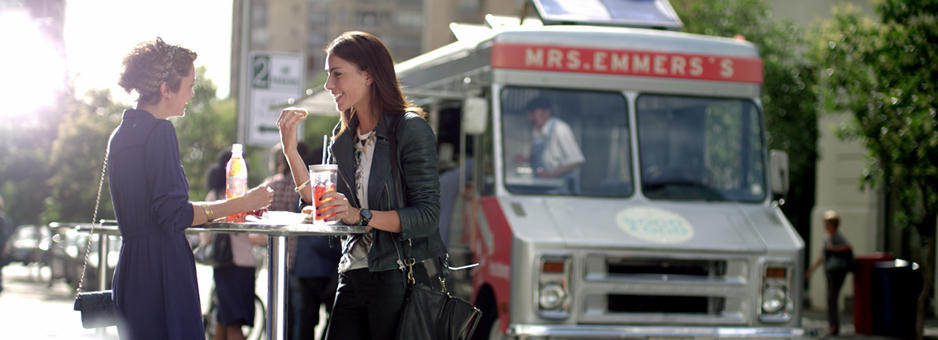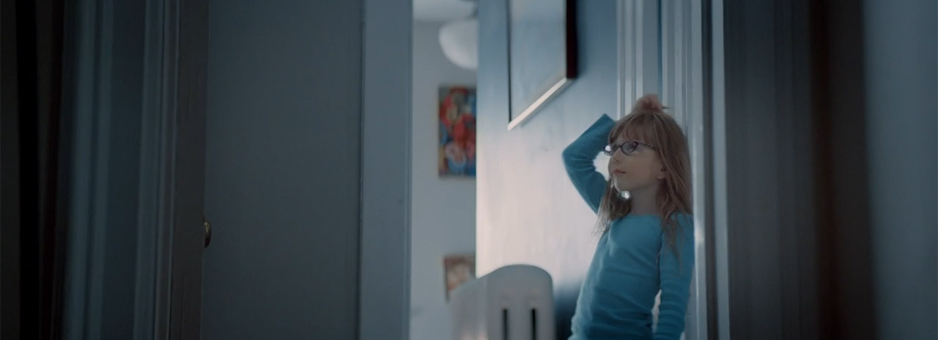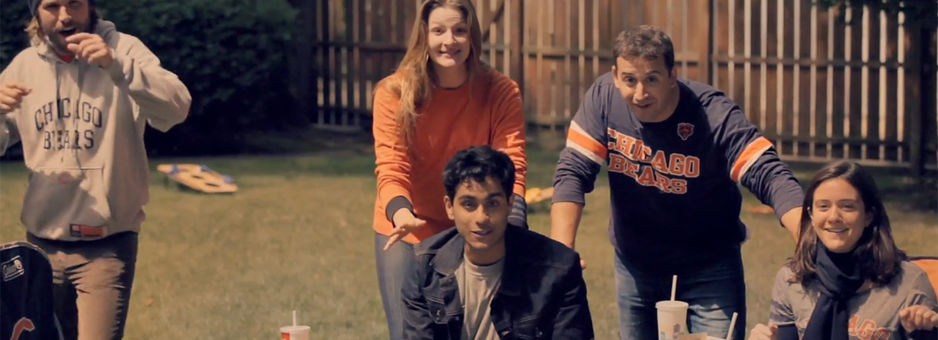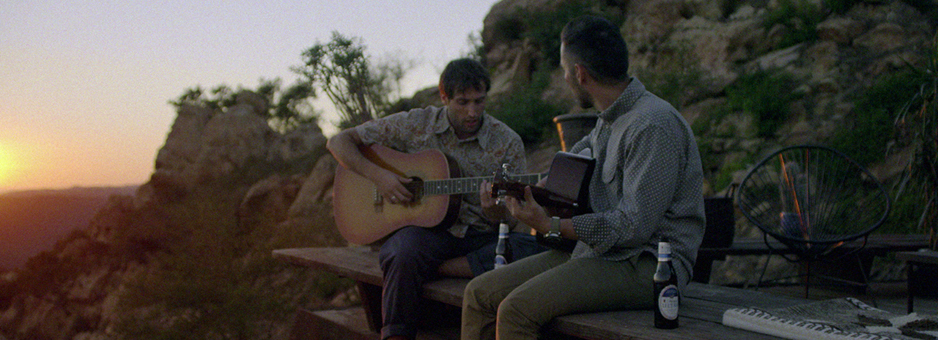Meet The Colourist
Oscar Oboza
Senior Colourist, Nice Shoes, Minneapolis
A colourist has the very creative role of helping nature along its way. Here we talk with industry-leading talent Oscar Oboza, who joined Nice Shoes in September 2014, and launched the NYC-based studio’s Minneapolis presence out of Volt Studios. Oscar talks about his passion for colour grading and likens his creative role to being a chef in the kitchen of a busy 3 star Michelin restaurant, while the Baselight toolset provides his utensils to mix the ingredients.
How did you start out in post? Was it luck or a ready mapped out plan?
The adage that colourists are made, not born, certainly rings true in my career. I started actually as a biology major, but after two years, I took a year out to reassess and explore other career paths. As luck would have it, a good friend of mine worked as the summer intern at a creative editorial facility in Chicago. He asked the company if they needed someone during the school year and I gained entry, which is where my eyes were opened up to the world of post, and eventually to the mystery of colour grading.
I sensed that this was an opportunity to grow this role into something bigger. Within a year I knew that this was the career path that I wanted to follow, so I grabbed the chance with both hands. I knew from then that the post-production industry was my future.
I am not sure I would say it was solely by chance that I got into post-production. I would like to think that I created the opportunities by being willing to learn and through sheer hard work. To some extent it was the luck of being in the right place at right time - but it was also about being able to recognise that there was some greater force at play guiding me down this path. I knew I was interested in the creative side but also really enjoyed the technology and this opportunity to work in post-production allowed me to grow and feed both interests in tandem.
How did you get into the job as a colourist?
After finishing college, I was promoted from intern to full-time employee. Around that time, the edit house began to think about expanding into finishing. In my early years, it was strictly a creative editorial, so using a flatbed editor was a big part of my role there. As other opportunities emerged, I started to dabble in other services involving video. One such task involved transferring film, usually a work picture interlock, to ¾" videotape, using a Videola. Basically, the system was a flatbed editor coupled with a video cam, using a prism system to add pull-down - I easily understood the knack of balancing out the camera so the pictures looked good. In turn, I began to develop a real feel and understanding for colour.
Because of that interest, I was given the chance to be a colourist, where I already showed the ability to work with clients as an offline video editor. Initially it was trial-by-fire because I was learning on the job but I had a real desire and an intuitive feel for colour so it was very natural for me to make that transition. All this wouldn't have been possible if it weren't for my bosses, who have been my mentors and have supported me throughout. They had the belief that I had a gift and the foresight to steer me towards a rewarding career.
I appreciate the chances that I was given in those early days, and I feel strongly about providing the same opportunities for the young people coming into the business today. My new assistant here at Nice Shoes Minneapolis has just been introduced to Baselight, learning the capabilities of the software. Baselight is a simple-to-use system with a myriad of intuitive tools that allows the younger generation with novice experience to learn new tricks and ways of improving the visual glory of images quickly and easily.
What gives you a buzz about colour?
What I love most about colour is what it brings to people. I love how people's eyes magically open wide and light up when I have interpreted their thoughts onto the screen through the perfect use of colour. It is the best feeling to know that you have been able to use your creative powers to 'create colour', that is latently there, but up to you to bring it out and show all the possibilities from the shoot. Ultimately I see myself as an extension of the production team who painstakingly prepare everything. We, as the colourists, are just the caretakers - we take what the production team has created so magnificently already to the next level that will 'wow' the clients. It is great to have the appreciation for what you do and to be seen as part of the whole collaborative process.
Clients are amazed with the speed at which we work on the Baselight system and the tools available right at our hands. It is like being a chef, creating something incredible in front of their eyes.What genre of content do you work on?
Minneapolis has a sizable advertising community, despite it being a small TV market, so my work mostly revolves around commercials. However we also occasionally do the grading on documentaries and short films. I love working on commercials but it is always exciting to do something different as it allows for a different mind set and indeed a different workflow. Doing the grading on documentaries and short films is on a very different scale, but still gives me the chance to create something amazing. For instance you get a different feel from super grainy images that bring out the mood, which when coupled with the audio, can really create specific emotions. It is all part of the creative side of the brain to react to incredible imagery.
When I am doing a commercial I only listen to audio at the beginning of the grade as it lends itself to how you might approach the grade. So audio plays its part - its how the look might be set at the beginning but not so specific.
What projects have you been working on recently?
I had recently finished spots for Payless Shoes, Ad Council, Dove Deodorant and McDonalds before the transition from Optimus. My first project for Nice Shoes was the new Arby's campaign out of Fallon Minneapolis.
Earlier this year, I worked on a series of Crystal Light TV commercials that put Baselight to good use. The agency creatives wanted an organic dapple of a colored light to 'breathe' in and out during each scene. With the help of the Baselight blend tools, I was able to give the spots that extra artistic touch. I'm very proud to have those spots on my reel.
What makes for a good day at the desk?
As I said earlier it is about 'wowing' the client and seeing their delight in what we can do with Baselight - and the speed at which we can do it.
Another one of my passions is to ensure that I am ahead of the curve when it comes to new technology. For me it is a never-ending quest to gain knowledge and to get my hands physically on new technology. My hunger for knowledge encourages me to try out new things and approaches that may help to improve my art. Learning more about my craft is a never-ending process and is hugely important because, excuse the pun, but standing still is a recipe for disaster. If you stop learning - you die.
Additionally it is good to have a sense of what is going on around you in the industry as 'looks' are always changing. It is important as a colourist to keep abreast of the trends or to break out new trends in the way things look. Looking at each project with a fresh eye, particularly in the commercial world, is imperative to ensure that the commercials look different and stand out - no need here to use existing canned looks. It is also great to discover something new each time - which is part of the fun of being a colourist!
The new suite that the Nice Shoes engineering team has constructed at Volt is really impressive. It mimics the setup and workflow that they’ve established in New York. I’m working with a Baselight TWO and my assistant has a Baselight ONE as well as an IO Mac connected to the network.
I’m also able to share material and project data with the colourists at Nice Shoes in New York and in Chicago, so that we can exploit the full arsenal of talent and resources on bigger projects if need be.
Until 2007, I used a traditional hardware-based DaVinci system. At that point I was looking to make the move to Pixel Farm who asked me what system I would like to work on. When I went to NAB in 2006 to review what was available on the market, I saw a lot of software-based systems, including Autodesk's Lustre, Da Vinci, etc. I had known of Baselight and followed their development closely. After I was asked to sit down for a demo by the FilmLight team, within minutes I was hooked. I actually felt that I could run a session straight away.
I saw Baselight as my future really, the system is so intuitive - it works the way I like to work. In a way it propelled me into the future, where I could learn new skills and understand new software solutions and workflows. I suppose you could say I was taking a chance by switching but I felt so strongly about the Baselight system that I was willing to hang my career on it. The choice was instinctive. It felt comfortable, intuitive, and with the ergonomic GUI and controls, it was the perfect tool for me.
The Baselight operations think and work in the same way I do. It can be customised as needed but it is already laid out in the right way for me. I think this stems from the fact that the philosophy behind the system is that it is made by people within the industry so they get me.
I do like to investigate and explore what the technology can really do, albeit in my view I feel there is a high level of instinct involved in knowing what makes a good picture. There is an instant sense of style, which the colourist usually possesses. Additionally, and maybe more importantly, it is about how you work with people. Client expectations demand that we are as knowledgeable about what we do. This thinking also applies to the grading system we use. Baselight allows my instincts to take over, where I don't have to think about the tools as they are already there at my fingertips. I can focus on the artistic aspect of my job and deliver what my clients want.
What are the current challenges in getting the look you want?
There are a lot of challenges for colourists today, as we tend to work with a mix of camera footage all in different formats. The beauty of Baselight is that it can accommodate different formats and standards and just allow us to get on with our job.
For instance we can have a mix of Alexa and Red cameras on one project. We also see DSLR footage, which is good to start with, but may be limited by technology if we have to match it with Alexa or Red files - we can only go so far with the DSLR footage.
So it can be limiting as we don't want the DSLR footage to drive the look but it can work if they are using it as B roll footage. There is a sense that we are expected to bring all formats together and make a cohesive piece. This is limited by formats - you wish you could stretch some footage more but it doesn't look good on screen. Baselight is an open interpretation that allows you to do that - so not a challenge within the system itself. The limitation is that no one camera does everything.
Though I don't get involved on the production directly, I will occasionally talk with the production company ahead of time about specific colour concerns. For instance, the ad agency wanted a shot where the product (washer and dryer) would have a sleek, silvery, high con look, but a pair of dark blue jeans, hanging on the wall, needed to maintain detail. After a still frame from storyboard was sent over, I provided examples showing how far the look could be pushed, which gave our client the confidence to shoot that particular setup. It comes down to opening lines of communication as soon as possible for everyone involved with production and transitioning those files more smoothly into post.
It's pretty rare nowadays to come across film-originated commercial projects. The choice of which medium to shoot on is usually made by the director, and he may be after a certain textural 'gritty' quality to a commercial that film provides. We can use the tools within Baselight to enhance that and bring out the 'grit', and stretch and bend contrast and tonality, but still keep that certain 'velvetiness' in the blacks, rounding off the highlights in ways that only film can do.
So what do you like to do after you have been in a darkened room all day?
Once outside the darkened suite I like to have fun. I enjoy playing tennis (to get rid of any tension that may have built up over the day) and love staying active with a few rounds of golf every now and then! I also enjoy just kicking back with a book and listening to music. I am currently reading Wooden: A Lifetime of Observations and Reflections On and Off The Court. There's also a new piano in the house that's just itching to be played. I think some lessons are in the works in the near future!
I love good food and enjoy relaxing with my family and friends in the great eateries around the Twin Cities. I certainly look to the chefs to do their magic with their utensils to create the colourful dishes just as I have created the look of the projects all day in the grading suite!
The Beatles have always inspired me, where their music stills seems vibrant and meaningful. But in a broader sense, music itself gets the creative thoughts going when I'm working. I have a Spotify playlist, which I laughingly titled 'Epic Music', that contains soundtracks from movies that I enjoyed. Sports might seem an unlikely source, but the creative artistry of Michael Jordan, the genius of John McEnroe, or the game changing skills of Bobby Orr… these are athletes whose talent I found inspirational as well.
Join In
If you want to participate in our MTC programme, we'd love to hear from you. Contact:
Alexa Maza
e: [email protected]
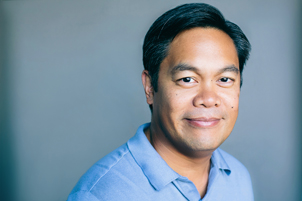
“You could say I was taking a chance by switching but I felt so strongly about Baselight that I was willing to hang my career on it.
The choice was instinctive.”
Details
Colourist: Oscar Oboza
Role: Senior Colourist
Company: Nice Shoes, Minneapolis
w: Nice Shoes




